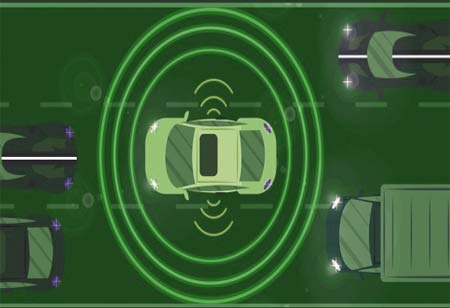THANK YOU FOR SUBSCRIBING
THANK YOU FOR SUBSCRIBING
Be first to read the latest tech news, Industry Leader's Insights, and CIO interviews of medium and large enterprises exclusively from Auto Tech Outlook

By
Auto Tech Outlook | Wednesday, February 28, 2024
Stay ahead of the industry with exclusive feature stories on the top companies, expert insights and the latest news delivered straight to your inbox. Subscribe today.
The automotive industry embraces Human-Machine Interface (HMI) technology, enhancing safety, driving habits, and user preferences with advancements like gesture control, voice recognition, and AR.
FREMONT, CA: The automotive landscape is witnessing a transformative shift in how individuals engage with their vehicles. Traditional interfaces characterized by cumbersome buttons and intricate menus are giving way to a new era propelled by the evolution of Human-Machine Interface (HMI) technology. This advancement redefines the driver's journey, fostering a seamless, secure, and highly customized experience.
Latest Advancements
Gesture Control systems employ sensor technology to recognize specific hand movements, enabling users to adjust volume or navigate interfaces effortlessly without physical contact. While still in its nascent stage, this technology exhibits considerable potential to revolutionize HMI. Voice Recognition systems have evolved to understand natural language, empowering drivers to seamlessly control various vehicle features such as climate settings, entertainment options, and navigation using voice commands. This enhances convenience and minimizes distractions, thereby bolstering safety during driving. Augmented Reality (AR) Interfaces are poised to transform the driving experience by superimposing critical information such as speed limits, lane guidance, and potential hazards onto the windshield, offering drivers real-time guidance and enhancing situational awareness. This emerging technology promises to deliver a seamless and intuitive driving interface by overlaying essential data onto the physical environment.
Benefits
Advanced safety features are paramount in modern vehicles, aiming to minimize distractions and enhance overall safety. By integrating voice commands and gesture controls, these technological advancements facilitate a safer driving experience by allowing drivers to keep their focus on the road. This reduces the likelihood of accidents and promotes responsible driving habits.
Moreover, the incorporation of intuitive technologies not only improves safety but also enhances the user experience. Interacting with the vehicle becomes more seamless and enjoyable, as drivers can easily adjust settings or control functions without diverting their attention from driving tasks. For instance, envision effortlessly adjusting the temperature or changing music tracks without looking away from the road ahead.
Furthermore, future HMIs are poised to revolutionize vehicle personalization. By leveraging artificial intelligence algorithms, these systems can learn and adapt to user preferences over time, offering a tailored driving experience. This level of personalization transforms the car into an extension of the driver's preferences, ensuring a comfortable and customized journey for every individual.
The Road Ahead
The horizon of HMI presents a landscape rich with promising prospects. With ongoing technological advancements, the trajectory suggests a proliferation of increasingly sophisticated interaction modalities. Among these, prospective developments encompass the integration of:
Emotion Recognition: Envision automobiles adapting settings in response to occupants' emotional states, such as playing soothing music during moments of stress or providing motivational prompts during extended journeys.
Biometric Authentication: Foresee a transition towards fingerprint or facial recognition systems supplanting conventional keys, facilitating a seamless and secure means of accessing and initiating vehicle operations.
While significant advancements present notable advantages, it is imperative to prioritize the development of safe and user-friendly interfaces that do not impede or divert the attention of drivers. As HMI technology progresses, the driving trajectory suggests a future characterized by heightened interactivity, customization, and, most importantly, enhanced safety measures.
 Copyright © 2025 AutoTech Outlook. All Rights Reserved | Privacy Policy | Subscribe | Sitemap | About us | Feedback Policy | Editorial Policy
Copyright © 2025 AutoTech Outlook. All Rights Reserved | Privacy Policy | Subscribe | Sitemap | About us | Feedback Policy | Editorial Policy 



